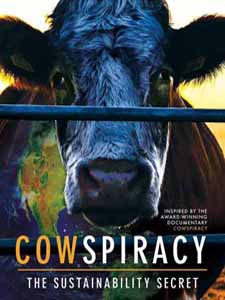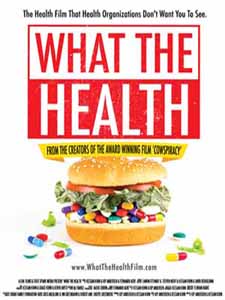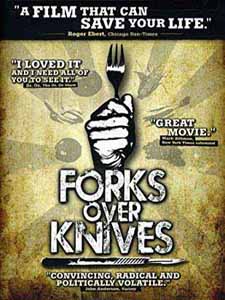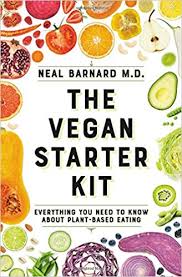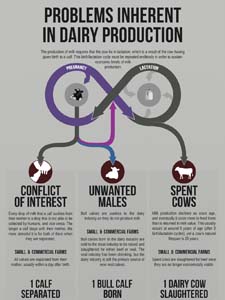The Conscious Living Resolution
ADOPT A PLANT-BASED DIET/LIFESTYLE

We feel that making the transition to a plant-based diet & lifestyle takes first place as the most powerful super-strategy for promoting “wellbeing for the whole being.”
THE ANIMAL FOODS/PRODUCTS INDUSTRY CAUSES ENORMOUS HARM TO EVERY LEVEL OF OUR BEING...
It’s well established to be the #1 cause of…
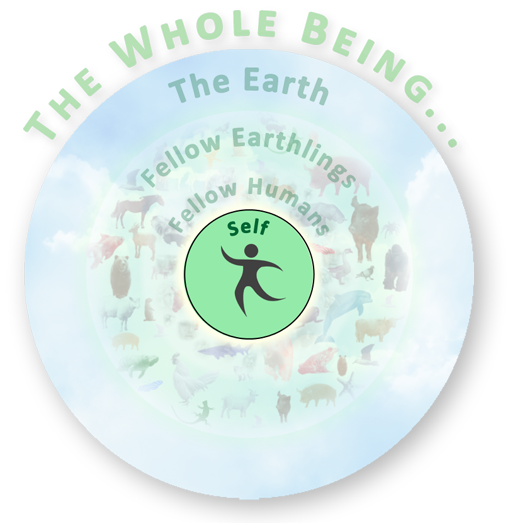
…human death and disease (in the large majority of the world)

…world hunger and unequal food distribution
…the development of antibiotic resistant “superbugs”
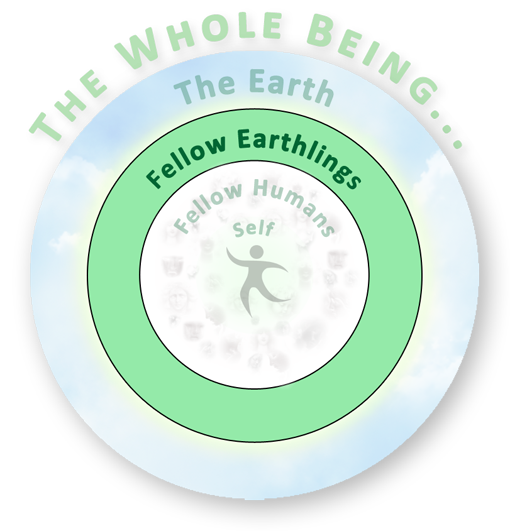
…worldwide species extinction
…the untold suffering to the billions of animals who are raised and slaughtered in the industry every year
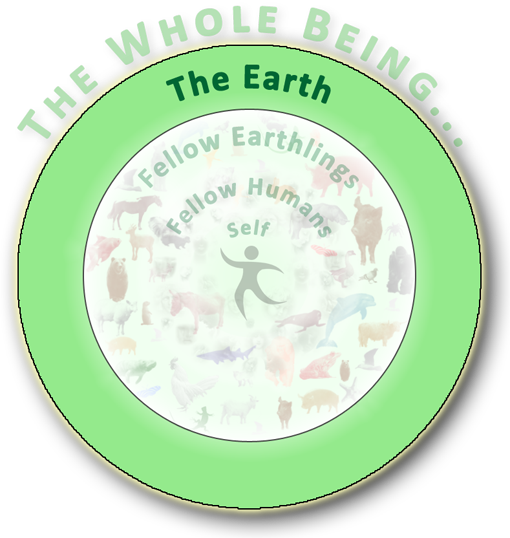
…greenhouse gas emissions and climate change
…destruction of our forests, rainforests, waterways and oceans
…water and air pollution

HERE ARE SOME GOOD FILMS THAT OUTLINE MANY OF THESE ISSUES...
A short but informative video that summarizes many of these key issues:
A short video that balances the urgency of the situation with hope and inspiration:
Feature-length documentaries that explore links between the consumption of animal products and harm to personal health, human society, our fellow Earthlings and the Earth (each film has a different emphasis):
NEED A HAND MAKING THE TRANSITION? TRY ONE OF THESE STARTER KITS...
A comprehensive book by one of the most experienced plant-based doctors in the field…
Try the Physician’s Committee’s 21-Day Vegan Kickstart…
WANT TO LEARN MORE?
Read on… for extensive details and research about the impacts of consuming animal products on every major domain of our wellbeing.
Try out our
Diet Impact Calculators

THE IMPACT ON OUR PERSONAL HEALTH
animal foods cause widespread disease and shortened lives
The large majority of cancers, cardiovascular disease, diabetes, and other forms of degenerative illness can be prevented by adopting a plant based diet.
Dr Dean Ornish, in collaboration with the University of California San Francisco (UCSF) and other leading academic and health institutions, has developed the first robustly evidence based program for reversing heart disease and other related chronic conditions. The program essentially consists of strict adherence to a low-fat plant-based diet combined with regular exercise, stress management and social support.
Good introductory documentaries: The documentaries Forks over Knives and What the Health? provide good starting points for a deeper look into these topics…
…and there is a very extensive body of research that provides further validates and details these findings (see below for a selection of this research).
Human populations around the world who consume the least animal products live the longest.
“They have each traditionally eaten low-calorie, plant-based, whole-foods diets” (p. 65). The Okinawans, in particular, are considered to be the healthiest and longest-living group of people ever thoroughly studied; and their diet consists of an unusually low percentage of animal products. Their average weekly diet consists of 49 servings of vegetables, 49 servings of whole grains, and 14 servings of soy products. They eat fish only 2 to 3 times per week, and eat virtually no dairy or other types of meat.
In sharp contrast, the diets of the younger generations of Okinawans have been heavily influenced by the West as a result of the tens of thousands of U.S. troops that have moved into the region in the past decades, and now contain much more animal products. Corresponding to this change in diet, the younger Okinawans now have the highest risk of obesity, coronary heart disease, and premature death of anywhere in Japan. As a result, we find the tragic situation in which “Okinawans in their forties and fifties…are more likely to die of heart attacks and cancer than their elders who are in their nineties and beyond” (Robbins, 2006, p. 108).

We don’t need animal products to meet our dietary requirements. To the contrary, it’s generally easier to meet our full requirements of micronutrients and macronutrients on a whole foods plants-based diet.
A joint report from the World Health Organization [WHO] and the Food and Agriculture Organization [FAO] of the United Nations concluded:
“Households should select predominantly plant-based diets rich in a variety of vegetables and fruits, pulses or legumes, and minimally processed starchy staple foods. The evidence that such diets will prevent or delay a significant proportion of non-communicable chronic diseases is consistent. A predominantly plant-based diet has a low energy density, and may protect against obesity.”
The American Dietetic Association (ADA), the world’s largest organization of food and nutrition professionals, released a formal statement explaining their position on vegetarian and vegan diets, in which they concluded:
“It is the position of the ADA that appropriately planned vegetarian diets, including total vegetarian or vegan diets, are healthful, nutritionally adequate, and may provide health benefits in the prevention and treatment of certain diseases. Well-planned vegetarian diets are appropriate for individuals during all stages of life, including pregnancy, lactation, infancy, childhood and adolescence, and for athletes….An evidence-based review showed that vegetarian diets can be nutritionally adequate in pregnancy and result in positive maternal and infant health outcomes. The results of an evidence-based review showed that a vegetarian diet is associated with a lower risk of death from ischemic heart disease. Vegetarians also appear to have lower low-density lipoprotein cholesterol levels, lower blood pressure, and lower rates of hypertension and type 2 diabetes than nonvegetarians. Furthermore, vegetarians tend to have a lower body mass index and lower overall cancer rates.”
One reason so many people find it so difficult to give up animal foods is because many of these foods are actually physiologically addictive.
Meat addiction: Research has suggested that meat may also be physiologically addictive, although the mechanism of addiction in meat is not as clear as it is for dairy products. One study found that when participants were given the drug naloxone, which blocks opiate receptors, their craving for meat (which consisted of ham, salami, and tuna in this particular study) correspondingly diminished (Yeomans et al., 1990).
“What appears to be happening,” concluded Barnard, President of the Physicians Committee for Responsible Medicine, “is that, as meat touches your tongue, opiates are released in the brain, rewarding you—rightly or wrongly—for your calorie-dense food choice and propelling you toward making a habit” (p. 63).
According to this research, then, the challenge of transitioning to a plant-based diet that many people experience may be compounded by a very real physiological addiction.
cancer
The consumption of red and/or processed meat significantly increases the risk of developing many kinds of cancers, including colorectal cancer, pancreatic cancer, prostate cancer, and breast cancer. Eating fish has been shown to increase the risk of breast and prostate cancer. The WHO has placed processed meats in the same category of cancer risk as smoking tobacco.
Cooked meat of any kind creates heterocyclic amines, potent toxins that have been found to be highly carcinogenic.
Men with a high prognostic risk of prostate cancer who consume significant eggs and/or poultry skin have a 4-fold increased risk of cancer recurrence or progression.
The consumption of milk and other dairy products has been linked to an increased risk for a number of different types of cancers, especially breast cancer and prostate cancer.
Vegan blood dripped onto cancer cells in a petri dish (i.e., “ex vivo”) was shown to be 8x more effective at stopping cancer cell growth than the blood from someone on a standard American diet (with average meat/dairy intake).
cardiovascular disease
Fats and cholesterols from animal meats, dairy and eggs are among the largest factors in the development of high blood pressure, atherosclerosis, obesity and cardiovascular disease (stroke, heart attacks, etc.).
Burkitt DP. Western diseases and their emergence related to diet. S Afr Med J. 1982;61(26):1013-5.
Spence, J. David, et al “Egg yolk consumption and carotid plaque”. Artheroslcerosis xxx (2012) 1-5
Strong JP, Mcgill HC. The pediatric aspects of atherosclerosis. J Atheroscler Res. 1969;9(3):251-65.
“Top Food Sources of Saturated Fat in the U.S.” Harvard T.H. Chan School of Public Health
...but switching to a plant-based diet not only stops cardiovascular disease, but can actually reverse it.
Deardorff J. Top cardiologist touts vegan diet to patients. Chicago Tribune. Aug 16, 2014.
Ellis FR, Sanders TA. Angina and vegan diet. Am Heart J. 1977;93(6):803-5.
“Halt heart disease with a plant-based, oil-free diet”. Harvard Health Publications
Kadoch MA. The power of nutrition as medicine. Prev Med. 2012;55(1):80.
Ornish, Dean, et al “Can lifestyle changes reverse coronary heart disease? The Lifestyle Heart Trial”. The Lancet. July 1990. Vol. 336 No. 8708 Pages 129-133
Cardiovascular disease is the #1 cause of death globally, killing over 17 million people every year. (that’s nearly 50,000 every single day!). Most children today show the first signs of heart disease by the age of 10.
Meat-related bacteria (both their metabolism and their released toxins) play an additional role in the development of cardiovascular disease.
In the U.S., the average meat eater is considered “overweight” verging on “obese” (and the rest of the world is following suit as their animal consumption increases); whereas the average vegan is considered to have a “healthy” body mass index.
Diabetes
A low fat, plant-based diet is the most effective diet for avoiding, controlling and/or reversing type 2 diabetes.
It is the consumption of animal fats rather than excessive sugar that is the primary factor in the onset of type 2 diabetes. As little as one serving of meat per day can significantly increase the risk of developing diabetes.
Barnard, Neal, et al “Meat Consumption as a Risk for Diabetes”. Nutrients. 2014 Feb: 6(2) 897-910
“Diet and Diabetes: Recipes for Success”. Physicians Committee for Responsible Medicine
Exposure to dairy during early development may lead to as much as a 4-fold increase in the risk of children and adolescents developing type 1 diabetes.
Life expectancy is reduced an average of 10 years for those with type 2 diabetes, and is reduced 20 years for those with type 1 diabetes.
Other
Dairy-Related Conditions
Contrary to popular belief, it appears that milk doesn’t strengthen bones and may actually weaken them—populations that consume the most dairy products (and other animal proteins) have the highest rates of osteoporosis and hip fractures later in life.
There is a strong link between dairy foods and autoimmune diseases, especially arthritis and multiple sclerosis.
The large majority of people in the world become lactose (milk sugar) intolerant after being weaned in childhood.
Dairy products can harm children in a multitude of ways—including causing multiple gastrointestinal disorders, anemia (iron deficiency), acne, and milk allergy.
Dairy products create casomorphins, which may play a role in both Sudden Infant Death Syndrome (SIDS) and Autism.
Fish & Fish oil
• Leukemia (in the case of smoked or cured fish)
• Brain and nervous system injury
• Interference with the endocrine/hormone system
Fish and other animal seafoods contain particularly high levels of other human-produced environmental toxins.
Synthetic fertilizers, pesticides and insecticides run into waterways, which bioaccumulate in fish, which are in turn passed into the humans who eat the fish, leading to various health problems.
“How Fertilizers Harm Earth More Than Help Your Lawn”. Scientific American
other toxins
in animal foods
Dioxin and closely related toxins are considered to be the most toxic class of chemicals known to science, and 93% of dioxin exposure comes from eating animal products.
In meats and other animal foods (including fish), dioxins bioaccumulate to the point of being up to 100,000 times the concentration of that existing in the surrounding environment. Animal foods contain between 4 and 20 times as much dioxin as plant-based foods.
Mothers pass a large amount of their own dioxin store to their infants across the placenta (leading to developmental defects) and through her breast milk, delivering as much as half of her accumulated dioxin store to her first child.
“Dioxins and Furans: The Most Toxic Chemicals Known to Science”. Energy Justice Network
Eating organic animal foods will not help you avoid environmental carcinogens and other toxins.
McMahon, Jeff “Radioactive Strontium Found in Hil, Hawaii Milk”. Forbes. April 27, 2011
Men with a high prognostic risk of prostate cancer who consume significant eggs and/or poultry skin have a 4-fold increased risk of cancer recurrence or progression.
Over 450 types of drugs are given to farm animals to maximize production and profit. Many of these remain in the animal foods that people eat and pose a significant threat to the consumers.
other benefits of
a plant-based diet
In addition to plant-based diets reducing the risk of cancer, heart disease, diabetes and the other illnesses mentioned above, evidence suggests that are still more illnesses and health conditions that a plant-based diet may protect us from, including…
…protecting against the development of emphysema (now referred to as COPD)…
…protecting against kidney disease and kidney failure…
…reducing the risk of developing Alzheimer’s disease and dementia…
…reducing the risk of developing Parkinson’s disease…
…treating Crohn's disease & multiple sclerosis.
…reducing anxiety and depression.
Breaking the
“not enough protein” &
“I need meat for my health”
myths
…and it’s very easy to get all the protein you need or would ever want in a completely plant-based diet…
…after all, the strongest, most muscular land animals on the planet are herbivores.
There’s nothing else in an animal-based diet that we can’t find in a healthier form elsewhere…
…fiber and most micronutrients (essential vitamins and minerals) are typically much higher in a plant-based diet…
…and no, there’s no evidence that certain blood types or genetic predispositions require us to consume animal foods.
Here are just a few of the many vegan athletes who are thriving on completely plant-based diets:
Carl Lewis, Olympic sprinter
Winner of 9 Olympic gold medals
Set multiple world records
Voted World Athlete of the Decade in the 1980s
Voted Olympic Athlete of the Century
Fiona Oakes, marathon runner
Holds world records for the fastest aggregate time for a marathon on each continent, the fastest time for a marathon on each continent plus the polar ice cap, and the quickest elapsed time for marathons on all continents plus the ice cap.
Patrik Baboumian, powerlifter
2012 European Powerlifting Champion
World record breaker in 3 strongman events
World record breaker for log lift and yoke walk
Jeremy Reijndeers, crossfit competitor
CrossFit 2018 Fittest Man in the Netherlands
Scott Jurek, ultramarathon runner
Broke the record for 24 hour running (USA) and the 3500-km Appalachian trail
Won over 24 ultramarathons and broke numerous course records
Tia Blanco, surfer
2016 Winner of the World Surfing Games; Winner of the Ron Jon Jr Pro
Rob Bigwood, armwrestler
2006 Left handed Super Heavyweight World Champion
Winner of over 40 State Championships
David Carter, NFL defensive lineman
A 300-lb defensive lineman who has played for several NFL teams
Timothy Shieff, freerunner/parkour
2009 World Freerunning Champion
2-time Winner of the Ninja Warrior UK
Harri Nieminem, Thai boxer
World Thai Boxing Champion 1997
Ultramarathon runner in retirement
Sarah Stewart, wheelchair basketball player
Seven times title winner in the Australian National League; three-time Paralympian
Cam Awesome, super heavyweight and heavyweight amateur boxer
13 national titles
Multiple international tournament wins
Winner of US Olympic trials
Meagan Duhamel, figure skater
Two-time world champion
Seven-time Canadian Champion
Gold, Silver and Bronze Winter Olympic medal winner
Pat Reeves, powerlifter
Multiple world record holder in numerous age groups
Continues to compete in 70-74 category
Cody Elkins, racquetball player
World Indoor Champion 2015
World Outdoor Champion 2017
(vegan since age 2!)
Numerous top MMA fighters
There has been a steady movement of MMA (mixed martial arts) fighters moving towards a vegan diet to improve their strength and stamina.
Here and here are two other great websites with lots more information about the growing movement of athletes towards a plant-based diet.
THE IMPACT ON OUR FELLOW HUMANS
Wasting precious resources that could feed more people
Over 800 million people are currently underfed and undernourished. At least 9 million people (and 3 million children) die from starvation every year, with 150 million children being developmentally stunted by malnourishment.
…while 82% of starving children live in countries where abundant grains and plant foods are grown, but which are then fed to the animals that will become the meat consumed by the more affluent nations (particularly the U.S, Europe and the commonwealth nations).

On average, farmed animals eat nearly 40 times what they produce as meat, dairy and eggs—in other words, eating animal products is an extremely inefficient use of resources.
The International Panel on Climate Change [IPCC] estimated that globally, farmed animals consume 7.0 Gigatons of dry matter biomass annually while only providing about .19 Gigatons of meat, dairy and eggs in return.
Given a fertile acre of land, we can choose between about 100 kg of beef – or up to 5,000 kg of beans or up to 20,000 kg of vegetables.
Worldwide, cows eat 135 billion pounds of food every day; at least 50% of all grain and 80% of soybeans produced in the world is fed to farmed animals. It’s estimated that if all of that grain and soybeans were fed directly to humans, the world food supply would increase by about 70%, enough to feed an additional 4 billion people!
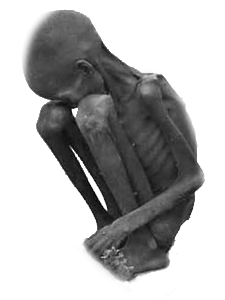
Children stunted by malnutrition
150,000,000 / Year
Children starved to death
3,000,000 / Year

More People who could be fed if we all gave up animal products
4,000,000,000 / Year
That's over 400 times the amount of food needed to prevent all starvation.
animal farming is creating “superbugs”
The alarm has been sounding that we are entering a very dangerous post-antibiotic era in which most antibiotic medications will no longer be effective. This is due to the excessive use of antibiotics allowing bacteria to develop immunity—and about 80% of all antibiotics are used within the animal farming industry…
The U.S. FDA Summary Report estimates that 80% of all antibiotics sold within the U.S. are used within the animal farming industry, with about 70% of these being the type deemed “medically important” (i.e., from classes of antibiotics important to human medicine). Antibiotic use in other countries is approaching these figures as consumption and practices quickly catch up to those of the U.S.
…and 1,000,000 people are currently dying every year due to antibiotic-resistant infections, with this figure predicted to continue increasing rapidly.
“Antimicrobial Resistance: Global Report on Surveillance 2014”. World Health Organization
Zuraw, Lydia. “2015 in Review: Animal Antibiotics”. Food Safety News. December 2015. Ornish D, Scherwitz LW, Billings JH, et al. Intensive lifestyle changes for reversal of coronary heart disease. JAMA. 1998;280(23):2001-7.
THE IMPACT ON OUR FELLOW EARTHLINGS
destruction of wildlife & species extinction
Animal agriculture is the hands down “leader” in wiping out our fellow wild Earthlings—both in the slaughter of individual animals and the obliteration of entire species… 137 plant, animal and insect species are lost every day (50,000 species per year!) due predominantly to the destruction of rainforest and other wild lands by animal farming.

Ten thousand years ago, 99% of the world’s zoomass (animal-based biomass) consisted of wild animals. Today, wild animals make up only 2% of the world’s zoomass. Humans and especially the animals that we raise for food make up the remaining 98%!
Forested wilderness is down to only 7% of the planet’s entire land area. At current rates of decline, essentially all (100%) wild vertebrates will be gone within 30 years (and this is a very conservative estimate).
The World Wildlife Federation has been compiling data related to wildlife populations since 1970, and their most recent report concludes that the world has seen about a 60% loss of vertebrate populations since 1970. If we extrapolate this figure into the future, the unsettling conclusion is that all (that’s 100%!) wild vertebrates may be gone within just 30 years. This is actually a highly conservative estimate, since it’s likely that as rates of our various destructive practices increase (including especially the steady increase in animal farming that we have seen in recent years), the rate of wildlife decline will likely also increase. This suggests the highly alarming possibility that wildlife may be completely wiped out within as little as one to two decades.
Entire Species Lost
50,000 / Year
...70-90% of which are due to animal farming

ENormous suffering for the Animals
For those of us who have been close to an animal, it’s clear that these animals experience pain and suffering just like we do.
“88 billion” farmed terrestrial animals is merely the amount formerly reported to the UN—the actual number of animals slaughtered annually is likely to be much higher. It is even more difficult to obtain accurate figures for marine animals as they are typically reported by weight rather than by numbers of individuals.
There is only too much documented evidence of the intense suffering that factory farmed animals typically endure—for example, see here and here.
Choosing to abstain from meat while eating eggs or dairy, or only purchasing “free range”, “grass fed” or seafoods, probably does not reduce the suffering inflicted upon the animals much at all, if any.
Many people choose to forego meat for ethical reasons, but then continue consuming eggs and dairy, believing that these animals suffer less. However, egg and dairy farming typically inflict at least as much pain and suffering on the animals as meat farming. Even so called “humane,” “organic,” “free range, “grass fed,” etc., farming involves an enormous amount of unnecessary pain and suffering inflicted upon billions of animals:
In dairy farming, the babies are removed from the mothers shortly after birth—the grieving mother cows are known to cry out and moan for up to many weeks at the spot where they last saw their calf.
The male calves are frequently slaughtered shortly after birth and made into veal or other feed, or are raised to be slaughtered within a year or two for beef.
Although the natural lifespan of a dairy cow is over 20 years, due to their highly taxing circumstances (being kept nearly continuously pregnant and milked multiple times daily) and typically an unnatural diet, hormones, etc., their milk production declines after just a few years, and they are typically slaughtered by the age of 7 or 8.
“Grass fed” beef cows probably have a better life than their factory farmed kin, but they are typically slaughtered as soon as they achieve maximum meat production, which is only at about 18 months old when their natural lifespan would be about 20 years. (And “grass fed” cows require more land and other resources and generally emit more greenhouse gases than factory farmed cows).
The term “free range” is often applied to chickens and pigs who are supposed to be raised in a more humane manner than on typical factory harms. However, in most countries, the term free range is poorly defined, is poorly regulated, and involves far less humane handling and “free ranging” than most people realize. For more detail, see the following links:
https://www.safe.org.nz/issue/free-range
https://veganoutreach.org/free-range-farms/
Most “free range” chickens do not actually have the opportunity to freely range, nor are their lives much different than that of caged chickens. Rather than being stuffed into lots of little cages, their situation typically consists of many chickens being stuffed into one large “cage” (i.e., the chicken shed) with extremely limited access to the outdoors. Chickens raised for meat (whether “free range” or not) are typically slaughtered at 5-7 weeks of age when their natural lifespan is 8 or more years. Shortly after hatching, the baby chicks have their beaks sliced off by a hot-knife without anaesthetics (i.e., debeaking).
“Free-range” pigs, like “free range” chickens, typically have far less humane conditions that most consumers realize (see above). Even those lucky few who are permitted some ability to range typically have rings forced through their noses to prevent them rooting in the soil and thereby deny them this important natural behaviour, and they are typically slaughtered at 5-6 months of age while their natural lifespan is about 10-12 years.
With chickens raised for eggs, in addition to the debeaking of the female chicks, the male chicks are separated from the females and immediately killed (they are considered useless to the egg industry since they cannot lay eggs and are of a different breed than those used for meat). This practice is known as chick culling, and typically consists of the chicks being dropped alive into a grinder, stuffed alive into plastic bags to be suffocated, or placed into a gas chamber.
The female chickens are still slaughtered well before their natural lifespan—typically after just 12-18 months when their egg production drops, whereas their natural lifespan is 8 or more years.
No matter how “humane” a particular method of farming may be considered, no farm animals are free to live a natural life (being confined to a greater or lesser degree), and they are nearly always slaughtered long before their life would naturally end. It would be difficult to deny that these factors must entail a significant degree of suffering for the animals, and often very severe suffering.
The evidence is quite robust that fish do experience pain and suffering just like humans and other animals, though they generally can’t make sounds and expressions of pain that we easily recognize with can give us the illusion that they don’t feel much pain (see for example here and here).
Personal hunting and fishing have one significant advantage over farming in that the animals are typically free to live a natural life, although the use of strictly hunting and fishing to feed large populations would be environmentally devastating (see above), and of course hunting and fishing still typically involve a torturous end for the animals.
These infographics illustrate some of the major ethical problems found in the egg and dairy industries…
These are the numbers of animals that have been slaughtered by the major animal products industries (meat, dairy, eggs, leather, fur and wool) in the time since you opened this page.





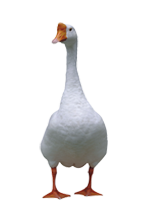
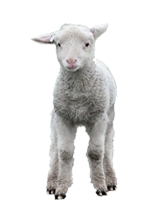

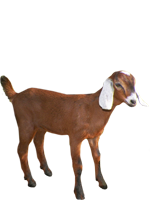

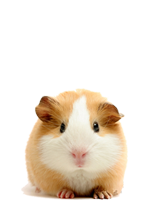
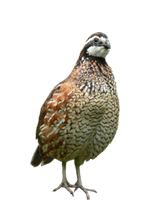


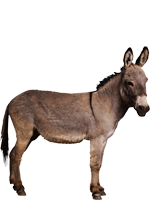
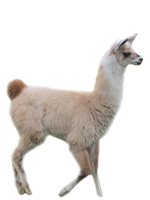

Farmed 'Game' Animals
650,000 / Year

Data sources: UN FAO (2016); Small Cetaceans Global Review (2018); International Whaling Commission; Fur Free Alliance
Thanks to Consider Veganism for developing the counting codes.
THE IMPACT ON THE EARTH
Global Warming & Climate Change
Greenhouse emissions from animal farming exceeds emissions from all modes of transportation (cars, trucks, planes, trains, ships, etc.) combined -- 40% more!
The animal farming industry is responsible for as much as 51% of all worldwide greenhouse gas emissions.
A more recent study conducted by the WorldWatch Institute in 2009 considered a broader array of factors in determining greenhouse emissions, and they concluded that the animal farming industry as a whole accounts for at least 32,000 million tons of carbon dioxide (CO2) per year, or 51% of all worldwide greenhouse gas emissions (Goodland & Anhang).
See also:

Methane is a far more potent greenhouse gas than carbon dioxide—72 times more potent; and animal farming emits nearly as much methane as all human use of natural gas.
Methane is a far more potent greenhouse gas than CO2, though it breaks down and is eliminated from the atmosphere more quickly than CO2 (with about an 8-year half-life for methane, compared to at least a 100-year half-life for CO2). It is estimated that even when considering this different rate of breakdown, methane is still about 72 times more potent a greenhouse gas than CO2 over a 20-year period of time (IPCC, 2007).
See also:
“Overview of Greenhouse Gases”. United States Environmental Protection Agency.
Nitrous oxide is an extremely potent greenhouse gas—about 300 times more potent than CO2! And animal farming is responsible for 65% of all human-related nitrous oxide emissions.
Nitrous oxide is an extremely potent greenhouse gas, with about 300 times the global warming potential of CO2 and remaining in the atmosphere for 150 years. The animal farming industry is responsible for about 65% of all human-related emissions of nitrous oxide.
“Livestock’ Long Shadow: environmental issues and options”. FAO. Rome. 2006
See also:
At the current rate of increasing consumption of animal products throughout the world, it is estimated that greenhouse emissions for agriculture will increase a further 80% by 2050.
“Free ranging,” “grass fed,” and “holistic management” livestock are not more environmentally friendly…and may actually be even worse.
There has been a lot of movement recently towards methods of animal farming that are claimed to be more environmentally sustainable—these particularly include those that are referred to as “grass fed,” “free ranging,” “regenerative agriculture,” and Allan Savory’s “holistic management.” There’s no doubt that most of these methods are probably far kinder to the animals themselves than traditional “factory farming.” However, the claims that these are more environmentally friendly are not standing up to the peer-reviewed research; and in fact, a number of studies suggest that some of these methods may actually be worse than factory farming.
Holst, Alexander. “The ‘Sustainability’ of U.S. cow production”. Faunalytics. October 18, 2018
Wuerthner, George. “Allan Savory: Myth and Reality”. The Wildlife News. November 2013
Even if we were somehow able to completely stop the use of all fossil fuels today,it is estimated that we will still exceed the 565 gigatonnes CO2 atmospheric limit (to remain under 2°C of global warming) by 2030 purely from our ongoing consumption of animal products.
[This calculation is based on http://www.worldwatch.org/node/6294 analyses that 51% of GHG are attributed to animal farming.]
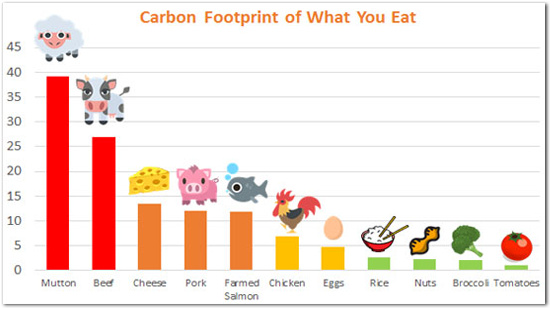
Kg of CO2 emitted for every Kg Consumed
Image source: Green and Healthy Monday
Data source: Environmental Working Group
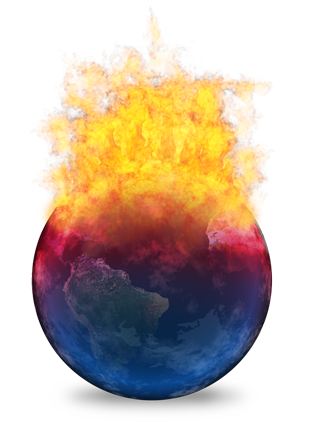
The Depletion of Fresh water
To put the figures of this diagram into perspective, buying 1kg less beef or lamb saves the same amount of water as not showering at all for an entire year! No amount of water-conserving behaviour could ever come close to simply switching to a plant-based diet.

Liters of Water Used per Kg Consumed
Image source: Green and Healthy Monday
Data source: UNESCO Institute for Water Education
Animal farming consumes about 1/3 of all fresh water used by humans worldwide (and as much as 90% in some developing countries).
Considering that many parts of the world are already experiencing serious shortages of fresh water (with the forecast in this regard looking particularly alarming), this is a compelling reason for us to make the transition away from the use of animal products as quickly as possible.
“Water, water everywhere… but not a drop to drink.” TheWorldCounts. 15 April, 2014.

Destruction of Fertile Land & Wild Spaces
The animal farming industry occupies over 30% of all ice-free land on the planet and 83% of all agricultural land...
See also:
“Livestock a major threat to environment. Remedies urgently needed”. FAO Newsroom. 29 November 2006
…and animal farming is the single largest cause of desertification throughout the world (i.e., the process of turning formerly fertile and biodiverse lands into essentially barren desert).
Every single day, 80,000 acres of tropical rainforest are destroyed and another 80,000 acres are seriously degraded. Animal agriculture is responsible for about 80% of this deforestation worldwide, and 91% of the deforestation in the Amazon since 1970.
To put these figures into more practical terms, it is estimated that 55 square feet of rainforest is destroyed for every fast-food hamburger that we consume.
“Measuring the Daily Destruction of the World’s Rainforests”. Scientific American, 19 November, 2009
See also:
“Avoiding Unsustainable Rainforest Wood”. Rainforest Relief
Butler, Rhett. “10 Rainforest Facts for 2017”. Mongabay.com. January, 2017
Butler, Rhett. “Cattle Ranching’s Impact on the Rainforest”. Mongabay.com. July 2012
“The Disappearing Rainforests”. Save the Amazon.org
“Tropical Deforestation”. National Aeronautics and Space Administration: Facts
If we all give up the use of animal products, the extent of agricultural land that would be freed up for reforestation will be greater than the land area of the United Sates, Australia and China combined.
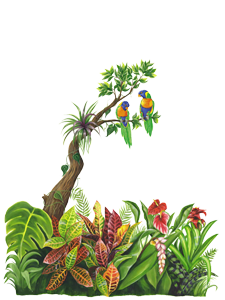
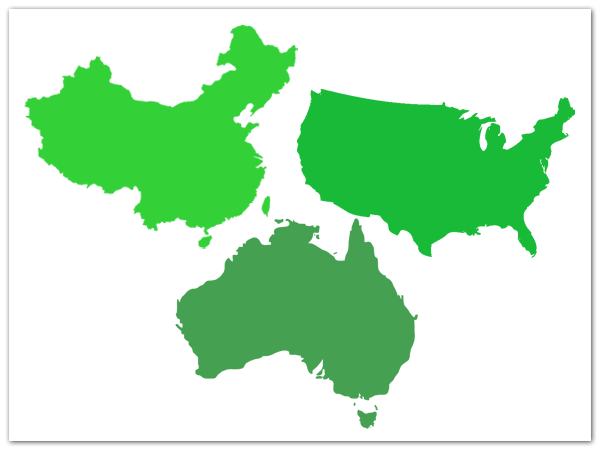
The area of land equivalent to China, the USA, and Australia combined could be reforested if we all gave up animal products.
Data source: Poore & Nemecek
toxic waste polluting our lands and waterways
Every year, livestock produce about 13 billion tons of waste. In countries that consume a lot of animal products like New Zealand and the U.S., about 5 tons of animal waste is produced per person living there each year, and other countries are quickly approaching this ratio as they race to catch up to the U.S.’s level of animal food consumption.
“Agricultural Waste Characteristics”. Agricultural Waste Management Field Handbook. USDA. Chapter 4
“Animal Agriculture: Waste Management Practices”. United States General Accounting Office. July 1999
“Livestock Production and the Environment”. NZ Trade Consortium Working Paper No. 6. 1999
The world’s waterways are increasingly becoming unfit for swimming (let alone drinking) due to parasite infections caused primarily by animal farming. Here in New Zealand, 60% of our streams and rivers are now formally declared as unfit for swimming due to the risk of E. coli infection resulting primarily from animal farming.
…and even this figure is based on a standard that is considered by many to be far too conservative—deeming it acceptable for “an average swimmer on a random day” to have a 3% risk of becoming infected.

widescale destruction of ocean ecosystems
Animal farming operations on land have created more than 500 nitrogen-flooded dead zones around the world in our oceans.
As many as 2.7 trillion animals are pulled from the ocean each year due to fishing. 75% of the world’s fisheries are already either fully exploited or significantly depleted, and we’re on track to see essentially fishless oceans by 2048.
Furthermore…
…for every 1 pound of fish caught for consumption, up to 5 pounds of unintended marine species are caught and discarded as “by-kill.”
…as many as 650,000 whales, dolphins and seals are killed every year directly or indirectly by fishing practices.
…100 million sharks are killed for meat, their fins or as by-kill every year.
“Discard and bycatch in Shrimp trawl fisheries”. FAO: Fisheries and Aquaculture Department
“Fish count estimates”. Fishcount.org.uk
“General situation of world fish stocks”. United Nations Food and Agriculture Organization
Goldenberg, Suzanne. “America’s nine most wasteful fisheries named”. The Guardian. 20 March 2014
Keledjian, Amanda, et al. “Wasted Catch: Unsolved Problems in U.S. Fisheries”. Oceana. March 2014
Montaigne, Fen. “Still Waters: The Global Fish Crisis”. National Geographic
Mood, A & Brooke, P. “Estimating the Number of Fish Caught in Global Fishing Each Year”. July 2010
“Overfishing: a threat to marine biodiversity”. United Nations Environment Programme
Roach, John. “Seafood May Be Gone by 2048, Study Says”. National Geographic News. November 2, 2006
“Shark Fin Trade Myths and Truths: BYCATCH”. Shark Savers
“Sharks at Risk”. Animal Welfare Institute
“World Review of Fisheries and Aquaculture: Part 1”. UN: Food and Argriculture Organization. 2012
“World Review of Fisheries and Aquaculture: Part 1”. United Nations Food and Agriculture OrganizationWorm, Boris, et al. “Global catches, exploitation rates, and rebuilding options for sharks”. Marine Policy. 40 (2013) 194-204
...and purchasing farmed fish does not present us with an ecologically sustainable alternative.
Some farmed fish are able to live off of grains, but just as with consuming other animals, there is a significant overall loss of food when we go up the food chain ladder. In the case of farmed fish, it is estimated that they only provide about 10% of the calories back from what has been fed to the them, making it similar to the feed conversion ratio we find in poultry and pigs.
Many other farmed fish, particularly tuna and salmon, are fed other fish—up to 5 times as much fish as the meat that they themselves will produce.
Because farmed fish are typically crammed into very tight spaces (with 27 adult trout typically squeezed into the size of a bathtub), they provide a haven for parasites and disease to grow and spread, which in turn often spread into the wild populations, having decimated a number of wild fish populations in some areas. In addition, the pesticides used as an attempt to control these diseases often do even further harm to the surrounding ecosystems. Furthermore, their concentrated wastes also harm the surrounding ecosystems, one of a number of serious harms of which is the creation of toxic algal blooms and associated dead zones.
Naylor, R. et al. “Effects of aquaculture on world fish supplies.” Issues in Ecology. 8 (2001).
Marine wildlife killed by the fishing industry…

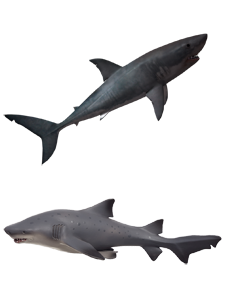

Dolphins & Small Whales
100,000 / Year
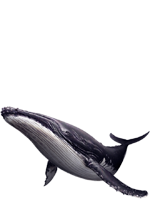
Large Whales
1,700 / Year
TRY OUT OUR DIET IMPACT CALCULATORS...
Plant-based diets also have tremendous benefits for our personal health…
…though it’s difficult to include clear figures for these benefits within a calculator like this.
In general, the less animal foods and processed foods your diet contains, the less likely it is that you will develop heart disease, cancer, diabetes, obesity, and a number of other illnesses; and the more likely it is that you will live a long and healthy life.
See the Personal Health section above for more details.
For more information and references related to these figures, see the related sections:
Impact on Our Fellow Earthlings
You can download the excel file used for these calculations HERE
In addition to the many resources listed in the sections above, here are some more articles that explicitly compare the impacts of different diets on human society, other species, and the Earth's climate and biosphere:
“Meat Eater’s Guide to Climate Change and Health”. Environmental Working Group. 2011
Ogden, Lillie. “The Environmental Impact of a Meat-Based Diet”. Vegetarian Times.
“The carbon foodprint of five diets compared”. Shrink That Footprint
“Vegetarianism and the Environment. Why going meatless is important”. Vegetarian Guide


